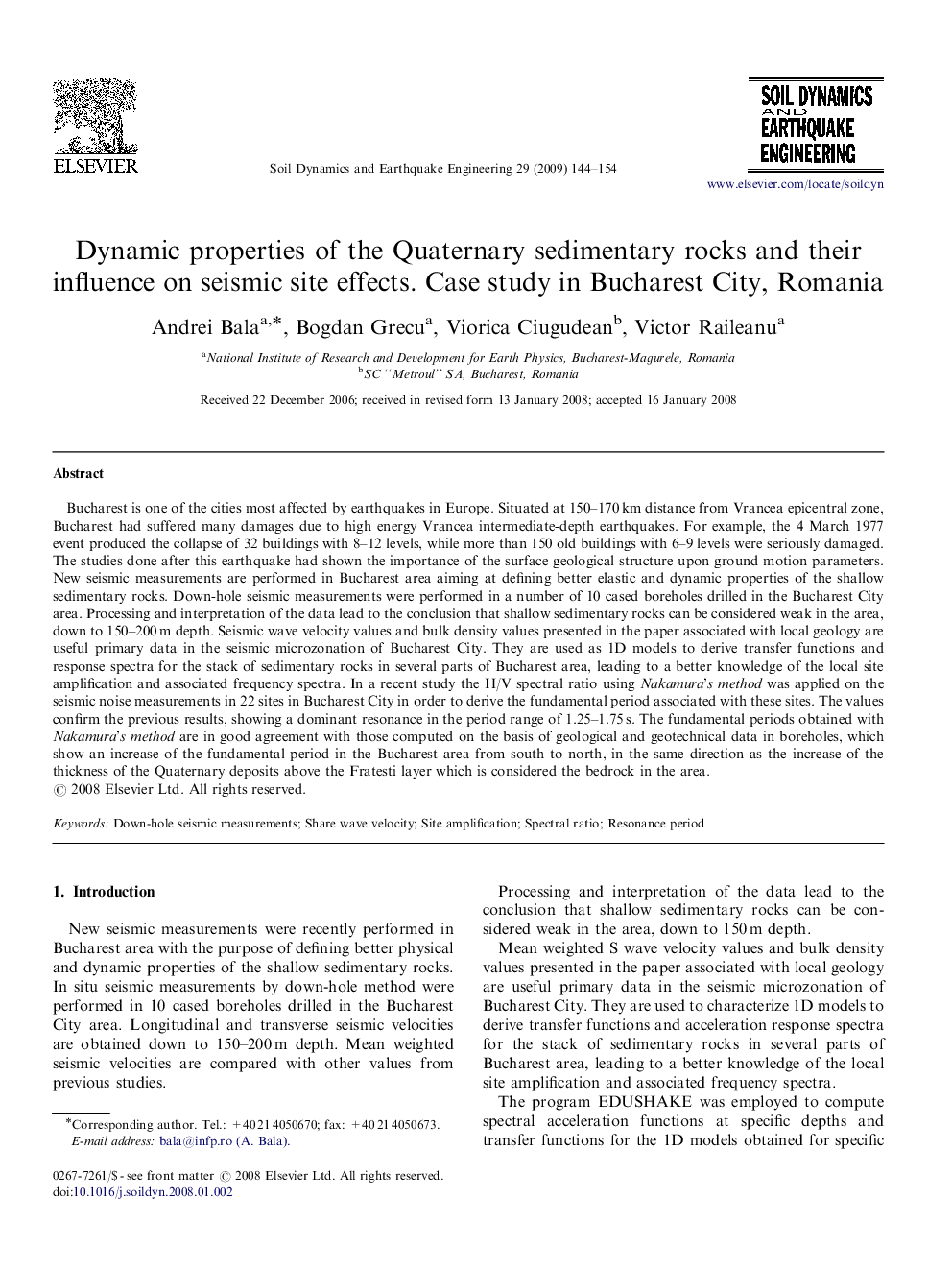| Article ID | Journal | Published Year | Pages | File Type |
|---|---|---|---|---|
| 305108 | Soil Dynamics and Earthquake Engineering | 2009 | 11 Pages |
Bucharest is one of the cities most affected by earthquakes in Europe. Situated at 150–170 km distance from Vrancea epicentral zone, Bucharest had suffered many damages due to high energy Vrancea intermediate-depth earthquakes. For example, the 4 March 1977 event produced the collapse of 32 buildings with 8–12 levels, while more than 150 old buildings with 6–9 levels were seriously damaged. The studies done after this earthquake had shown the importance of the surface geological structure upon ground motion parameters. New seismic measurements are performed in Bucharest area aiming at defining better elastic and dynamic properties of the shallow sedimentary rocks. Down-hole seismic measurements were performed in a number of 10 cased boreholes drilled in the Bucharest City area. Processing and interpretation of the data lead to the conclusion that shallow sedimentary rocks can be considered weak in the area, down to 150–200 m depth. Seismic wave velocity values and bulk density values presented in the paper associated with local geology are useful primary data in the seismic microzonation of Bucharest City. They are used as 1D models to derive transfer functions and response spectra for the stack of sedimentary rocks in several parts of Bucharest area, leading to a better knowledge of the local site amplification and associated frequency spectra. In a recent study the H/V spectral ratio using Nakamura’s method was applied on the seismic noise measurements in 22 sites in Bucharest City in order to derive the fundamental period associated with these sites. The values confirm the previous results, showing a dominant resonance in the period range of 1.25–1.75 s. The fundamental periods obtained with Nakamura’s method are in good agreement with those computed on the basis of geological and geotechnical data in boreholes, which show an increase of the fundamental period in the Bucharest area from south to north, in the same direction as the increase of the thickness of the Quaternary deposits above the Fratesti layer which is considered the bedrock in the area.
